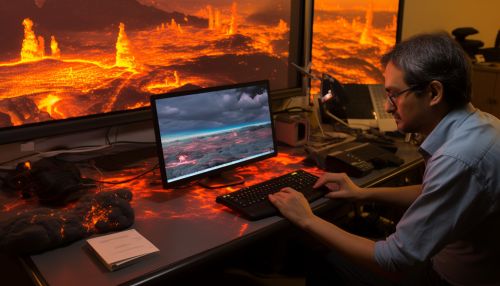The Role of Geostatistics in Predicting Volcanic Eruption Risk
Introduction
Geostatistics is a branch of statistics focused on spatial or spatiotemporal datasets. Developed originally for the field of geology, geostatistics is a highly specialized discipline that plays a significant role in predicting volcanic eruption risk. This article delves into the intricate details of how geostatistics contributes to the prediction of volcanic eruption risk, providing an in-depth understanding of the subject matter.


Geostatistics: An Overview
Geostatistics is a statistical discipline that deals with the analysis of spatially referenced data. It employs mathematical models and statistical techniques to interpret and predict the values associated with spatial or spatiotemporal phenomena. Geostatistics is widely used in various fields such as environmental science, petroleum geology, hydrology, and meteorology, among others.


Role of Geostatistics in Predicting Volcanic Eruption Risk
Geostatistics plays a crucial role in predicting volcanic eruption risk. This is achieved through the application of various geostatistical methods to analyze and interpret volcanic data. These methods include spatial analysis, kriging, and variogram modeling, which help in understanding the spatial distribution of volcanic features and phenomena, and predicting their future behavior.


Spatial Analysis
Spatial analysis is a type of geostatistical analysis that involves studying the spatial distribution of volcanic features and phenomena. This includes analyzing the distribution of volcanic vents, the spread of volcanic ash, and the dispersion of volcanic gases, among others. By studying these distributions, scientists can gain insights into the behavior of volcanoes and predict their future activity.


Kriging
Kriging is a geostatistical estimation technique that is used to predict the values of a variable at unobserved locations based on observed data. In the context of volcanic eruption risk prediction, kriging can be used to estimate the likely locations of future volcanic eruptions based on past eruption data. This can help in identifying high-risk areas and planning appropriate mitigation measures.


Variogram Modeling
Variogram modeling is another geostatistical method that is used in predicting volcanic eruption risk. A variogram is a function that describes the degree of spatial dependence of a spatial random field or stochastic process. In the context of volcanoes, variogram modeling can be used to analyze the spatial variability of volcanic features and phenomena, which can help in predicting their future behavior.


Conclusion
Geostatistics plays a vital role in predicting volcanic eruption risk. Through the application of various geostatistical methods such as spatial analysis, kriging, and variogram modeling, scientists can gain a deeper understanding of the behavior of volcanoes and predict their future activity. This can help in identifying high-risk areas and planning appropriate mitigation measures, thereby reducing the risk associated with volcanic eruptions.
